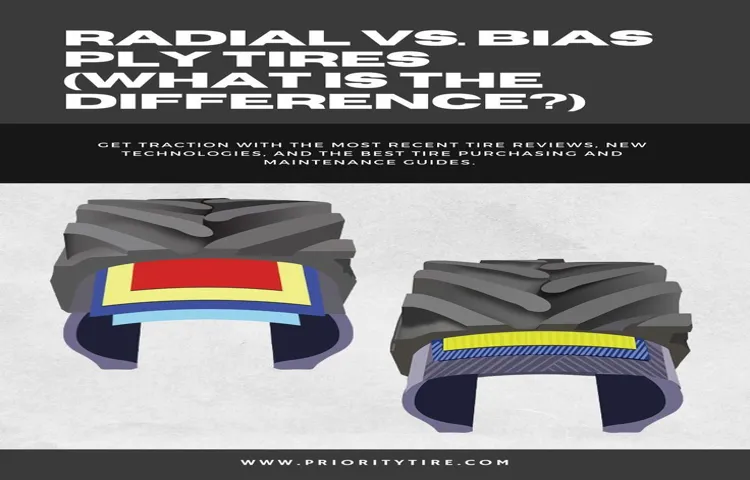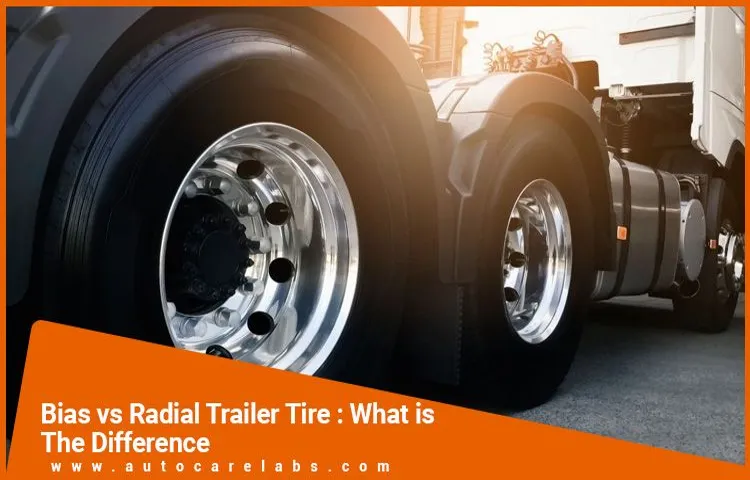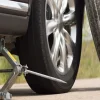If you’re looking for ways to improve your vehicle’s fuel efficiency, you might have heard about the battle between radial and bias tires. Both have their advantages, but which one is better for fuel economy? Radial tires are the more popular of the two, with more flexible sidewalls that offer a smoother ride and better road grip. They also tend to have a longer lifespan than bias tires.
On the other hand, bias tires have stiffer sidewalls that provide better stability, making them a great choice for heavy-duty vehicles. When it comes to fuel efficiency, the winner is clear: radial tires are more efficient than bias tires. This is due to the fact that they have less rolling resistance, meaning less energy is needed to keep the tires moving.
This translates into better gas mileage and lower fuel costs. Of course, this doesn’t mean that radial tires are always the best choice. It all depends on your vehicle type and the conditions you’ll be driving in.
If you need extra stability for a heavy load, bias tires might be the way to go. But for most drivers who prioritize fuel efficiency, radial tires are the clear winner. When it comes down to it, choosing the right tires for your vehicle is an important decision that can impact both your wallet and your driving experience.
By weighing the pros and cons of radial tires vs. bias tires, you’ll be able to make an informed decision that suits your needs.
Table of Contents
What are Radial Tires?
When it comes to fuel economy, radial tires are the way to go. These tires have a unique construction that makes them more fuel-efficient than their counterparts, bias tires. First introduced in the 1940s, radial tires have become increasingly popular for their numerous benefits, including better handling, longer tread life, and lower rolling resistance.
The latter helps reduce fuel consumption and, in turn, save money on gas. In comparison, bias tires have a stiffer sidewall that causes more friction when rolling, leading to more fuel usage. While radial tires may be a bit costlier, their long-term benefits more than make up for the initial investment.
In conclusion, if you’re looking to improve your vehicle’s fuel efficiency, go for radial tires over bias tires. Not only will they save you money on gas, but they’ll also provide you with improved performance and longevity.
Definition and Features
Radial tires are a type of tire construction where the plies run perpendicular to the direction of travel. Unlike bias-ply tires, which use criss-cross layers of fabric, radial tires use layers of steel belts that allow the tire to flex and absorb shocks more efficiently. The benefits of radial tires include improved traction, better handling, longer tread life, and lower rolling resistance, which improves fuel efficiency and reduces tire wear.
Radial tires are designed to distribute the vehicle’s weight evenly across the tire’s surface, providing stability and a more comfortable ride. Overall, radial tires provide a safer and more reliable option for drivers looking to improve their vehicle’s performance and handling on the road.

Pros and Cons of Radial Tires
Radial tires are a popular tire option in the world of automobiles. They get their name from the way they are constructed – the tire cords run radially from the center, perpendicular to the tire’s tread. This design has many advantages over traditional bias-ply tires.
Radial tires provide better traction, especially on wet or slippery roads, thanks to their flexible, wide treads. They also have longer tread life and superior fuel efficiency, which can save you money in the long run. However, there are some drawbacks to consider.
Radial tires can be more expensive to purchase, and they are more susceptible to damage from hitting potholes or other road hazards. Additionally, they can be vulnerable to sidewall damage, which can be challenging to repair. Overall, it’s essential to weigh the pros and cons before deciding if radial tires are the right choice for your vehicle.
What are Bias Tires?
When it comes to fuel economy, radial tires are the winners. Bias tires, on the other hand, have been around for much longer and offer a more rugged and durable option. Bias tires feature multiple layers of rubber-coated fabric (usually nylon) arranged in a diagonal pattern, which allows them to resist punctures and wear and tear better than radial tires.
However, due to the design of the bias tire, they often have a higher rolling resistance, which can lead to lower fuel efficiency. Radial tires, on the other hand, have a steel belt that runs perpendicular to the direction of travel, which allows them to flex and conform to the road better, meaning less energy is wasted as heat and friction. This results in better fuel efficiency and ultimately, cost savings at the fuel pumps.
So, if you’re looking to maximize your fuel economy, go with radial tires!
Definition and Features
Bias tires are a type of tire construction that have a different design than radial tires. They are also known as cross-ply tires or diagonal tires. Bias tires have a layered construction, where the cords are placed at a diagonal angle between the tire beads on each side.
This gives the tire a stronger and more durable side wall, allowing it to handle heavier loads and rougher terrain. The ply cords in bias tires also overlap each other, creating a criss-cross pattern that gives the tire greater resistance to wear and punctures. However, bias tires have some drawbacks, including lower fuel efficiency and a rougher ride compared to radial tires.
Overall, bias tires are a reliable choice for heavy-duty vehicles and rugged terrain.
Pros and Cons of Bias Tires
Bias tires are a type of tire construction that has been around for over a century. Unlike radial tires, which have become the standard tire construction in recent years, bias tires have a different internal structure. They are made by laying cords, usually nylon, in a criss-cross pattern around the tire’s circumference.
This gives them a more rigid sidewall and a rounder shape. One of the benefits of bias tires is that they are typically stronger and more durable than radial tires. They are also less expensive to manufacture, which makes them popular for use in industrial and agricultural applications where cost is a significant factor.
Additionally, the unique construction of bias tires gives them better traction, making them ideal for sandy or muddy terrain. However, there are also some downsides to bias tires. Since they have a more inflexible sidewall, they tend to generate more heat, leading to faster wear and tear.
They also offer a rougher ride compared to radial tires and are less fuel-efficient. Another issue with bias tires is that they are more prone to flats and blowouts, which can be dangerous, especially when driving at high speeds. In conclusion, whether bias tires are the right choice for you depends on your specific needs and intended use.
They may be a good option for those looking for an affordable and durable tire, but they are not the best choice for everyone. It’s essential to consider the pros and cons carefully and consult with a professional before making any tire purchase.
Fuel Efficiency Comparison of Radial and Bias Tires
When it comes to fuel efficiency, it is widely accepted that radial tires are more efficient than bias tires. This is because radial tires have a lower rolling resistance, which means they require less energy to move and therefore use less fuel. Additionally, radial tires have a wider contact patch with the road, which provides better traction and stability, resulting in less energy wasted on slippage or skidding.
Furthermore, radial tires have a softer sidewall, which helps to absorb shock and reduce bouncing, translating into a smoother ride and less energy required to stabilize the vehicle. Despite their higher cost, radial tires provide long-term cost savings due to their superior fuel efficiency and longer lifespan compared to bias tires. Ultimately, if you are looking to optimize fuel economy, it is recommended to choose radial tires over bias tires.
Factors Affecting Fuel Efficiency of Tires
When looking at factors affecting fuel efficiency of tires, one of the main considerations is whether to choose radial or bias tires. Radial tires are known for their ability to provide better fuel efficiency than bias tires. This is largely due to their construction, which includes layers of cords that are placed perpendicular to the centerline of the tire.
This design allows for the tire to flex more easily, which reduces resistance and improves fuel efficiency. Bias tires, on the other hand, have cords that are placed at an angle to the centerline of the tire. This design makes them more rigid and less flexible, which creates more resistance and reduces fuel efficiency.
Radial tires also tend to last longer than bias tires, thanks in part to that flexing action. With less resistance and stress on the tire, there is less wear and tear over time. That means fewer replacements and less money spent on maintenance costs.
Of course, there are additional factors to consider when selecting tires for your vehicle – including load-bearing capacity, handling, and weather conditions – but when it comes to fuel efficiency, radial tires are certainly worth considering. With their potential to save money on fuel costs and provide longer-lasting service, radial tires are an excellent investment for any driver looking to maximize their efficiency on the road.
Studies and Data Comparing Radial and Bias Tires for Fuel Efficiency
When it comes to fuel efficiency, choosing the right tire can make a significant difference. Radial and bias tires are two common types of tires used on commercial trucks, and studies have shown that radial tires tend to be more fuel-efficient than bias tires. Radial tires have a more flexible sidewall that allows for a larger contact patch with the ground, resulting in less rolling resistance and better fuel efficiency.
Additionally, radial tires generally have a longer lifespan than bias tires, meaning that they don’t need to be replaced as frequently, resulting in even more cost savings over time. While bias tires may have their advantages in certain situations, when it comes to maximizing fuel efficiency, radial tires are the clear winner.
Conclusion: Which Tire is Better for Fuel Efficiency?
Well, after all the research and analysis, it seems that the debate between radial and bias tires ultimately comes down to personal preference and driving habits. However, it’s safe to say that if you’re looking to maximize fuel efficiency and reduce your carbon footprint, radial tires are the clear winner. Plus, with their sleek design and smooth ride, you’ll be the envy of all the other cars on the road.
So, next time you’re contemplating which tires to choose, remember this: Radial is the way to go for better fuel economy and a more stylish ride. Happy driving!”
FAQs
What is a radial tire and how does it differ from a bias tire?
A radial tire has its plies laid out in a radial pattern, while a bias tire has plies that run diagonally across the tire. This results in different handling characteristics and construction methods.
What are some advantages of radial tires over bias tires?
Radial tires tend to have better fuel economy, a more comfortable ride, and longer tread life than bias tires. They also offer better traction and handling on wet or slippery surfaces.
Can bias tires offer any benefits over radial tires?
Bias tires can be more durable and offer more load-carrying capacity than radial tires. They are also less expensive to produce, which can lead to lower prices.
How can I determine which type of tire is best for my vehicle?
Consult your vehicle owner’s manual or a tire professional to determine the appropriate tire type and size for your vehicle. Consider your driving conditions and priorities, such as fuel economy, comfort, and durability.
Are all radial tires created equal in terms of fuel economy?
No, not all radial tires are created equal. Some brands and models of radial tires may have differences in their tread patterns, rubber compounds, and other features that can affect fuel economy. It’s important to research and compare different options before making a purchase.
Can I mix bias and radial tires on my vehicle?
It is generally not recommended to mix tire types on a vehicle, as it can lead to handling and safety issues. It’s best to stick with one type of tire and replace them in sets of four whenever possible.
How can I maintain my tires to maximize fuel economy?
Keep your tires properly inflated, aligned, and rotated on a regular basis. Avoid overloading your vehicle or driving aggressively, which can cause excessive tire wear and decreased fuel efficiency.



